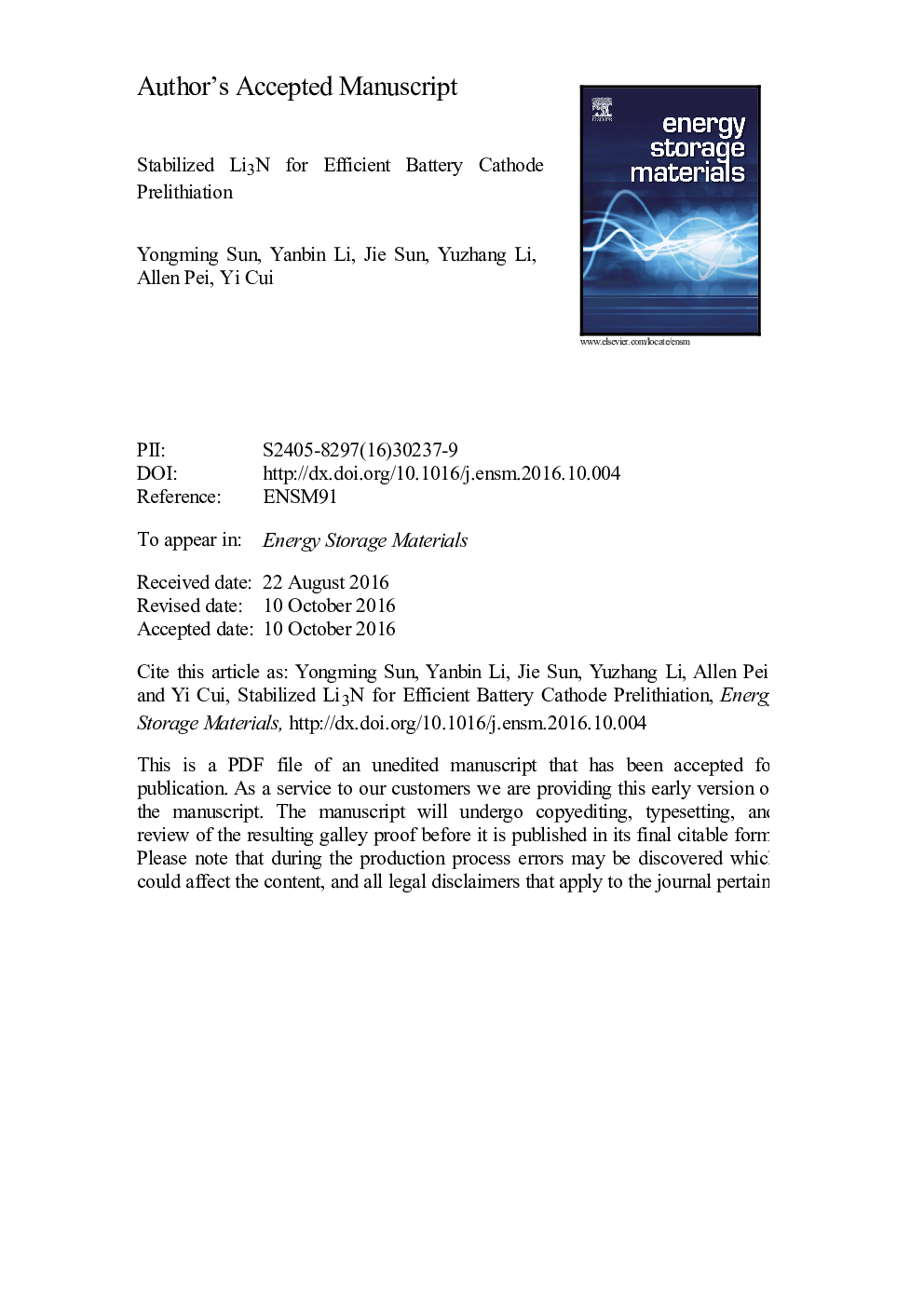| Article ID | Journal | Published Year | Pages | File Type |
|---|---|---|---|---|
| 5453750 | Energy Storage Materials | 2017 | 20 Pages |
Abstract
Li3N can deliver more than 10 times the theoretical capacity of existing cathode materials and can serve as an excellent cathode prelithiation additive to offset the initial lithium loss in lithium-ion batteries. However, Li3N has intrinsic problems of poor environmental and chemical stability in battery electrode processing environments due to its reactivity with moisture in ambient conditions and incompatibility with solvents used for battery slurry mixing. Herein, we report a facile route to prepare a surface-passivated Li3N material by the reaction of lithium metal with nitrogen followed by an annealing process. A dense surface passivation layer consisting of crystalline Li2O and Li2CO3 isolates the active composition of materials from air and thus enables good stability of Li3N particles in ambient conditions. The as-prepared Li3N powder is processable by slurry coating for electrode fabrication using a low-polarity solvent. The Li3N is verified to work as a secondary lithium source to offset the initial capacity loss at the anode using a Li3N/graphite cell configuration. A high “donor” lithium-ion specific capacity of 1761 mAh/g is achieved for a pristine Li3N electrode. When Li3N is included into cathodes, including LiCoO2 (LCO), LiNi0.6Co0.2Mn0.2O2 (NCM) and LiFePO4 (LFP), the hybrid electrodes can be baked and calendared in ambient conditions, and, as expected, high prelithiation efficiency is achieved. As a typical example, with a 2.5% Li3N additive, a LCO electrode delivers a 51 mAh/g higher capacity than that of the pristine LCO electrode in the first charge process and shows stable cycling behavior. The good stability and high prelithiation efficiency of the Li3N powder enable its potential application in high-performance lithium-ion batteries.
Related Topics
Physical Sciences and Engineering
Energy
Fuel Technology
Authors
Yongming Sun, Yanbin Li, Jie Sun, Yuzhang Li, Allen Pei, Yi Cui,
